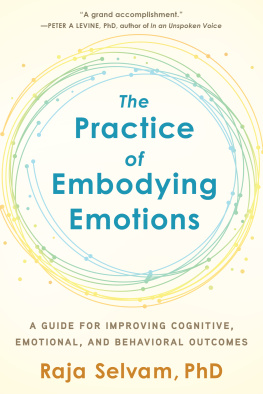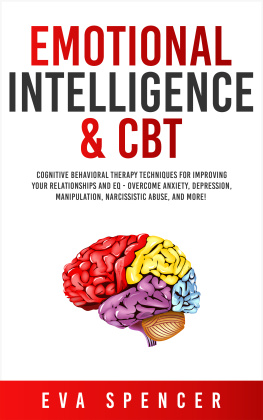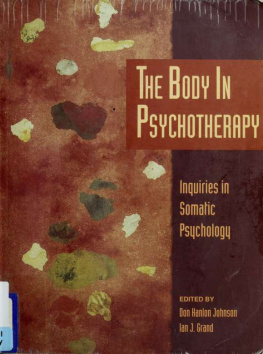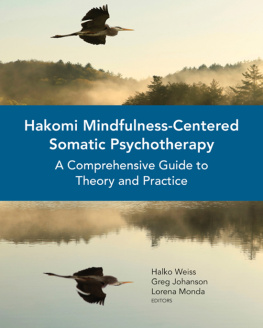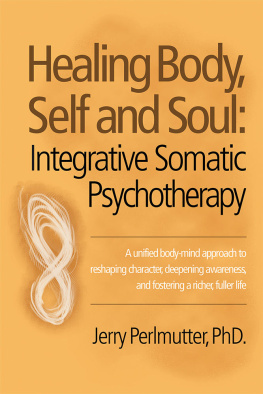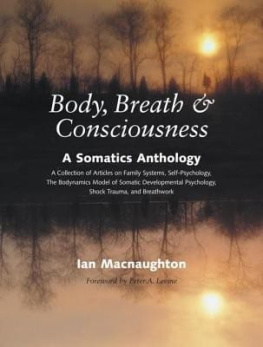
Praise for The Practice of Embodying Emotions
A grand accomplishment. A unique synthesis. With academic precision, and with a deep gift for reflection, Dr. Selvam takes us on a stunning journey, exploring the structure and function of emotion in the brain as well as the body, the role emotions play in health and dis-ease, and how the body can be used to create a greater capacity to regulate and tolerate emotions to improve cognitive, emotional, and behavioral outcomes in all therapies. The Practice of Embodying Emotions is a rich addition for all therapists, as well as a gift to laypersons wishing to contact their emotional intelligence and enrich their lives.
Peter A Levine, PhD, developer of Somatic Experiencing and best-selling author of Waking the Tiger and In an Unspoken Voice
Our capacity to regulate our emotions is extremely important for healing our attachment wounds and for having healthy relationships. This book, which offers a simple and effective method for building in us a greater capacity to regulate our emotions through our body, is a must for all therapists who work with attachment and for those looking for a self-help approach to improve their relationships.
Diane Poole Heller, PhD, author of Crash Course and The Power of Attachment and creator of DARe (Dynamic Attachment Re-Patterning experience) Training
Ripe for our times, this brilliant book sheds light on the vital importance of fully embodying emotions, whether painful, pleasurable, or in-between. With an abundance of research and empirical evidence, it makes the case that emotions have a stronger influence on cognition and behavior than the other way around. As a couples therapist and a child advocate for mental health in our schools, I experienced this book as a joyous godsend. With the support of the compassionate presence of another, emotions can be felt and fully expanded within the body to make them allies rather than foes. Dr. Selvam generously provides details of his four-step approach to alleviate suffering and enhance pleasure through the vehicle of emotional embodiment.
MAGGIE KLEIN, LMFT, Somatic Experiencing faculty member, and author of Brain-Changing Strategies to Trauma-Proof Our Schools
There are many things I like about this book. I like that it is not only about changing emotional reactions but also about changing cognition and behavior (for the better) through regulating emotionsand that it shows scientifically how cognition, emotion, and behavior are intimately related to each other in the brain as well as the body. I also like that it provides evidence that our cognition, emotion, and behavior are dependent on others as well as the broader environment. I like how the book alternates between theory and concrete examples and embodies the authors persistence and brilliance. I highly recommend it to all therapists and those who are serious about their personal and spiritual growth.
Lisbeth Marcher, founder of the Bodynamic Somatic Developmental Psychology System, coauthor of The Body Encyclopedia, and former president of EABP (European Association for Body Psychotherapy)
Raja Selvams book is a revelation. Combining the findings of neuroscience, Western psychodynamic theories, and Western and Eastern insights into the mind-body relationship, he has created a powerful and transformative approach to the way we experience and work with emotion. His extensive work with traumatized individuals and groups has put this approach to the test, and the resulting techniques make an invaluable addition to all forms of psychotherapy. Every page of this book conveys depth, clarity, and substance.
Glen Slater, PhD, cochair of the Jungian and Archetypal Studies Program at Pacifica Graduate Institute
This book is a must-read for anyone who is interested in understanding and working with the embodiment of emotions. It is the perfect combination of science, historical and cultural context, client case examples, and presentation of a well-articulated, innovative model. The reader is guided, eloquently and methodically, on an exploratory journey of interwoven threads of traditions, disciplines, and models for understanding emotion. That journey seamlessly leads into a clear and detailed description of Dr. Selvams approach to working effectively with embodying emotions.
Kathy L. Kain, PhD, coauthor of Nurturing Resilience and The Tao of Trauma
Dont miss this book! A valuable guide for therapists and interested folks alike. Introducing new concepts, solid theory, and grounded practice for working to embody emotions in gentle and innovative ways. The concept of sensorimotor emotions is a unique and much-needed contribution to the field of human consciousness. Refreshing in its presentation, with clarity, guiding the reader along a path of discovery toward embracing their whole being.
Ian Macnaughton, MBA, PhD, psychotherapist and author of Body, Breath & Consciousness
The Practice of Embodying Emotions is a timely and necessary refinement to the practice of somatic psychology. Raja Selvam captures, elucidates, and makes clinically useful an essential element of embodied therapythe use of the body to experience and express emotion as well as to defend against the experience and expression of emotion. His effort to bring all of this to life is both vital and indispensable to this moment in the development of the field of somatics and its clinical usefulness.
Maureen Gallagher, PhD, licensed clinical psychologist, certified psychoanalyst, Somatic Experiencing faculty member, Inner Relationship Focusing Trainer, and EFT Certified Supervisor
In Jungian psychology the capacity to tolerate opposites in human experience, especially emotion, is key for optimal psychological health, individual growth, and fulfilling relationships. Trauma recovery depends on it, as does community development and navigating the challenges in our turbulent world. The Practice of Embodying Emotionsa wise and soulful bookoffers an effective method for developing greater affect tolerance and transformation through the body. Rooted in science and the authors depth of experience and capacity for integrating multiple disciplines, it contains practical, comprehensive information and illuminating case examples. Highly recommended, this book is a must for all Jungians, healing practitioners, and those who seek to help make the world a better place.
Tina Stromsted, PhD, LMFT, LPPC, RSME/T, Jungian psychoanalyst, dance/movement therapist, somatics educator, and director of Souls Body Center
The Practice of Embodying Emotions is a substantial contribution to psychoanalysis, allowing and enabling a safe, hands-off somatic approach for treating trauma. This brilliant book ought to become required reading for all psychoanalysts and therapists involved in trauma treatment.
Margret Overdick, psychoanalyst, psychotherapist, trauma therapist, and specialist in pre- and perinatal psychological trauma treatment
Selvams extraordinary book offers an in-depth explanation of how the human body is involved in generating, defending against, and later triggering traumatic emotional experiencesespecially prelinguistic onesand is therefore a vital source of understanding of the physiology of implicit trauma memories that dominate the work of those engaged in pre- and perinatal psychology. The Practice of Embodying Emotions is brilliant and humble, research based, and intuitive. It is a game changer in the field of trauma therapy, and I personally rate it five out of five.
Next page
